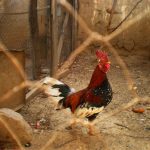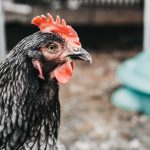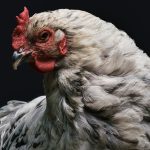Owls are nocturnal birds of prey known for their exceptional hunting abilities. They possess sharp talons, keen eyesight, and the ability to fly silently, making them efficient predators of small mammals and birds. Owls are territorial and will defend their hunting grounds from perceived threats.
To protect livestock from owl attacks, it is essential to understand their behavior, hunting patterns, and preferred habitats. This knowledge allows for the implementation of effective deterrent strategies and the creation of a secure environment for animals. By comprehending owl habits and instincts, livestock owners can develop proactive measures to safeguard their animals.
This understanding enables the creation of appropriate protection methods, reducing the risk of owl predation and ensuring the safety of livestock.
Table of Contents
- 1 Implementing Physical Barriers
- 2 Creating a Secure Coop
- 3 Utilizing Sound and Light Deterrents
- 4 Using Scare Tactics
- 5 Employing Livestock Guardian Animals
- 6 Seeking Professional Assistance
- 7 FAQs
- 7.1 What are some effective methods for keeping owls from picking off chickens?
- 7.2 Why do owls pose a threat to chickens?
- 7.3 Are there any natural deterrents that can be used to keep owls away from chickens?
- 7.4 What are some signs that owls are targeting chickens in a specific area?
- 7.5 Are there any legal considerations when it comes to deterring owls from preying on chickens?
Key Takeaways
- Owls are nocturnal predators with excellent vision and hearing, making them a threat to small livestock.
- Physical barriers such as wire mesh and netting can be effective in preventing owl attacks on poultry and other small animals.
- A secure coop with a sturdy roof and walls can provide protection for livestock from owl attacks.
- Sound and light deterrents such as motion-activated lights and loud noises can help scare off owls from the vicinity of the coop.
- Scare tactics like scarecrows, reflective tape, and decoy predators can be used to deter owls from preying on livestock.
Implementing Physical Barriers
Physical Barriers: A Simple yet Effective Solution
One effective way to protect your livestock from owl attacks is by implementing physical barriers around their living area. This can include installing fencing or netting to create a barrier between the owls and your animals. By creating a physical barrier, you can prevent owls from accessing your livestock and reduce the risk of potential attacks.
Visual Deterrents: Scare Tape and Reflective Materials
Another physical barrier that can be effective in deterring owls is the use of scare tape or reflective materials. These items can be hung around the perimeter of the livestock area to create a visual deterrent for owls. The reflective surfaces and movement of the tape can startle the owls and discourage them from approaching the area.
Predator-Proof Enclosures: The Ultimate Protection
In addition to fencing and reflective materials, you can also consider using predator-proof enclosures for your livestock. These enclosures are designed to keep predators, including owls, out while providing a safe and secure environment for your animals. By implementing physical barriers, you can effectively protect your livestock from potential owl attacks and create a secure living space for them.
Creating a Secure Coop
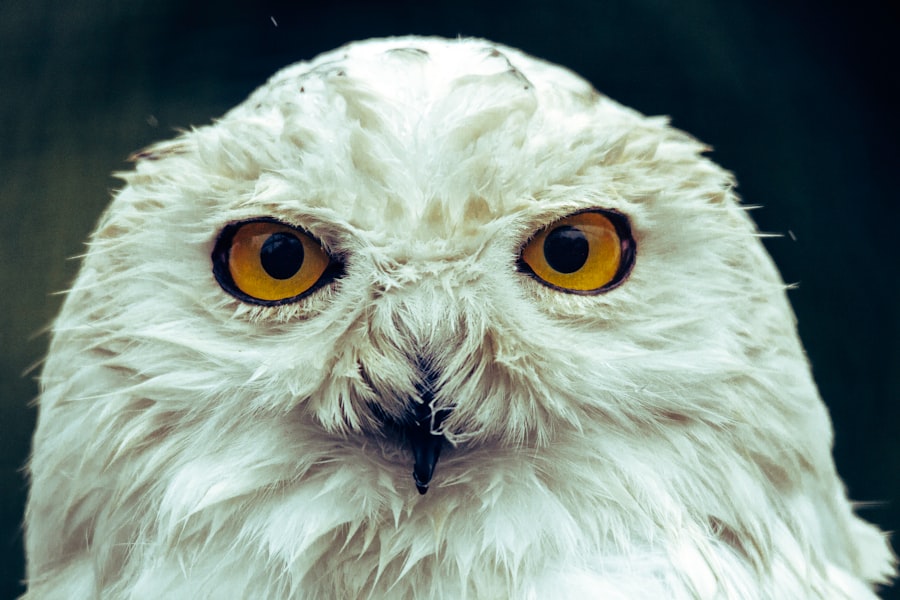
For poultry owners, creating a secure coop is essential for protecting their birds from owl attacks. Owls are known to target chickens and other poultry, making it crucial to implement measures to keep them safe. One way to achieve this is by ensuring that the coop is secure and predator-proof.
This can be done by using sturdy materials for the coop, such as heavy-duty wire mesh, to prevent owls from gaining access to the birds. Another important aspect of creating a secure coop is providing adequate lighting. Owls are nocturnal hunters, and they are less likely to approach well-lit areas.
By installing motion-activated lights around the coop, you can deter owls from targeting your poultry during the night. Furthermore, it’s important to consider the placement of perches and roosts within the coop. Owls are known to attack from above, so it’s crucial to design the coop in a way that minimizes opportunities for owls to perch and ambush the birds.
By creating a secure coop with proper lighting and strategic design, you can effectively protect your poultry from potential owl attacks.
Utilizing Sound and Light Deterrents
In addition to physical barriers, utilizing sound and light deterrents can be an effective way to deter owls from targeting your livestock. Owls are sensitive to loud noises and bright lights, making these deterrents an effective means of keeping them at bay. One option is to install motion-activated lights around the livestock area to startle owls and discourage them from approaching.
Another sound deterrent that can be effective in deterring owls is the use of distress calls or predator sounds. These can be played on a loop using speakers placed around the perimeter of the livestock area. The sounds of distressed animals or predators can signal danger to owls, causing them to avoid the area.
It’s important to note that sound and light deterrents should be used strategically to avoid causing unnecessary stress to your livestock. By implementing these deterrents in a targeted manner, you can effectively deter owls from targeting your animals while minimizing any negative impact on their well-being.
Using Scare Tactics
Scare tactics can be an effective means of deterring owls from targeting your livestock. One common scare tactic is the use of scarecrows or decoys placed around the perimeter of the livestock area. These visual deterrents can startle owls and discourage them from approaching the area.
Another scare tactic that can be effective in deterring owls is the use of predator urine or scent repellents. These products mimic the presence of predators in the area, signaling danger to owls and causing them to avoid the vicinity of your livestock. In addition to visual and scent-based scare tactics, you can also consider using motion-activated sprinklers or noise-making devices to startle owls and deter them from targeting your animals.
By using scare tactics strategically, you can effectively protect your livestock from potential owl attacks.
Employing Livestock Guardian Animals
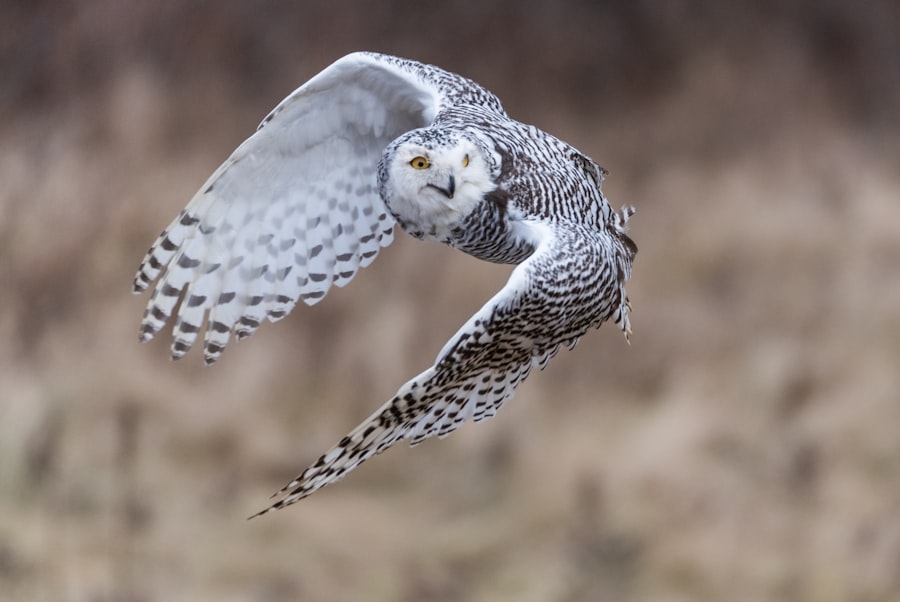
Natural Protectors
Livestock guardian animals, such as dogs or llamas, are natural protectors that can help deter predators, including owls, from approaching the livestock area. Their presence alone can signal danger to owls, causing them to avoid targeting your animals.
Dogs: Effective Guardians
Dogs, in particular, are known for their protective instincts and ability to deter predators. By introducing a well-trained livestock guardian dog to your farm or ranch, you can provide an additional layer of protection for your animals against potential owl attacks.
Llamas: Effective Deterrents
Llamas are also effective guardian animals that can help protect livestock from predators. Their natural wariness of unfamiliar animals and loud alarm calls make them effective deterrents against owls and other predators.
Enhanced Security
By employing livestock guardian animals, you can enhance the security of your livestock and create a safer environment for them to thrive.
Seeking Professional Assistance
If you’re facing persistent issues with owl attacks on your livestock, it may be beneficial to seek professional assistance. Wildlife experts or pest control professionals can provide valuable insight and guidance on how to effectively deter owls from targeting your animals. These professionals can conduct a thorough assessment of your property and provide recommendations on the best strategies for protecting your livestock from owl attacks.
They may also offer specialized services, such as installing owl-proof netting or providing ongoing monitoring and support to ensure the safety of your animals. In some cases, obtaining permits for non-lethal control methods may be necessary when dealing with protected owl species. Professional assistance can help ensure that you are in compliance with regulations while effectively addressing the issue of owl attacks on your livestock.
By seeking professional assistance, you can gain access to expert knowledge and resources that can help you effectively protect your livestock from potential owl attacks. In conclusion, protecting your livestock from owl attacks requires a comprehensive approach that takes into account the behavior of these birds of prey and implements effective deterrents. By understanding owl behavior, implementing physical barriers, creating secure coops, utilizing sound and light deterrents, using scare tactics, employing livestock guardian animals, and seeking professional assistance, you can effectively safeguard your animals from potential owl attacks.
With the right strategies in place, you can create a safe and secure environment for your livestock to thrive.
If you’re looking for ways to keep your chickens safe from predators like owls, you might also be interested in learning about how to provide a heater for your chicken coop to keep your birds warm during the winter months. Check out this article on heater options for a chicken coop to ensure your chickens stay cozy and safe year-round.
FAQs
What are some effective methods for keeping owls from picking off chickens?
Some effective methods for keeping owls from picking off chickens include using motion-activated lights, installing physical barriers such as netting or wire mesh, and using scare tactics such as decoy predators or noise-making devices.
Why do owls pose a threat to chickens?
Owls pose a threat to chickens because they are natural predators and are known to hunt small animals, including chickens, for food.
Are there any natural deterrents that can be used to keep owls away from chickens?
Yes, some natural deterrents that can be used to keep owls away from chickens include planting dense shrubs or trees near the chicken coop to provide cover for the chickens, and using reflective materials or shiny objects to create visual disturbances that can deter owls.
What are some signs that owls are targeting chickens in a specific area?
Some signs that owls are targeting chickens in a specific area include finding feathers or remains of chickens near the coop, hearing owl calls or hoots at night, and observing owls perched near the chicken coop.
Are there any legal considerations when it comes to deterring owls from preying on chickens?
Yes, there may be legal considerations when it comes to deterring owls from preying on chickens, as owls are protected under various wildlife conservation laws. It is important to check local regulations and seek advice from wildlife authorities before implementing any deterrent methods.
Meet Walter, the feathered-friend fanatic of Florida! Nestled in the sunshine state, Walter struts through life with his feathered companions, clucking his way to happiness. With a coop that’s fancier than a five-star hotel, he’s the Don Juan of the chicken world. When he’s not teaching his hens to do the cha-cha, you’ll find him in a heated debate with his prized rooster, Sir Clucks-a-Lot. Walter’s poultry passion is no yolk; he’s the sunny-side-up guy you never knew you needed in your flock of friends!


